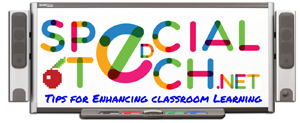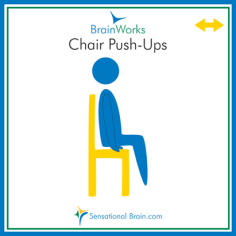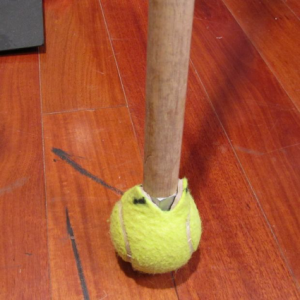by Stacy M. Turke
@stacyturke
Reprinted with permission
As a school OT, “Heavy Work” is a phrase I use at least once a day with students, teachers, and parents because these tasks are versatile in supporting so many skills and goals. The reason is simple: heavy work activities engage both the large muscle groups and joints of the body as well as stimulate the “proprioceptive receptors” that are present in those muscles and joints. Our “proprioceptive sense,” which is basically our sense of body awareness, helps us know where our body is in space, how it is moving, and where the parts are in relation to one another. It is this sense that lets us learn to dribble a basketball without looking (a skill I don’t have!), step into our pant legs one at a time while watching the morning news on TV (or is that just me?), and bring a filled cup to your mouth to take a drink without pouring it down your chin. So clearly, working on activities that stimulate these receptors will support motor coordination.
Another cool thing that comes with heavy work? These kinds of activities tend to regulate the neurologic system so a calm and focused brain and body can be the result. This is a bonus since getting to “calm” and “focused” is the state that is needed for attention and concentration. Anyone who runs, lifts weights, or does Zumba knows the feeling that comes after the exercise is completed. Many of us (especially me!) engage in these activities specifically to experience the post-exercise brain and not because the exercise itself feels oh-so-good. Yet another super cool benefit of heavy work is that EVERYONE can benefit from it. These activities are not just for people who struggle with neurologic or medical differences or challenges. As a teacher or a parent, ALL of your children can engage in heavy work activities and profit from them through improved focus and attention.
It’s a win all around.
So what ARE heavy work activities?
I’ve compiled a list of activities that are frequently used in the schools I support as well as activities that are often recommended to the parents of my students. But this list just scratches the surface! A quick Google or Pinterest search will bring up oodles of ideas. The trick is to find some that work for YOUR child and YOUR students.
This is probably obvious, but please provide supervision appropriate to the age of your child.
Heavy work activities for school
- Animal walks: (Walking like an animal.) These exercises are good heavy work activities to use as transitions between centers or other activities.
- Chair push-ups: While the children are seated,
have them place their hands on the chair, grasping the edge of the chair along the sides of their thighs. Instruct them to slowly push their bottoms up off the chair and count to three, then slowly return their bottoms to the chair. Repeat this several times.
- Wall push-ups: Have the students stand with their
feet placed approximately one foot away from the wall with their hands positioned on the wall at shoulder height. Instruct them to SLOWLY press their shoulders toward the wall while they provide resistance through the arms and shoulders. Have them pause when their cheek touches the wall and then slowly press the body back into the original position. Be sure that they maintain a straight back during the exercise.
- Move the walls: Have the children take the same position as above. Instead of instructing them to press their upper body into the wall, have them use their arms to press with all their strength to try to move the wall. Remind them to try not to “pulse” but press with a continuous effort for a count of three, eventually pressing for longer and longer periods of time. Again, be sure that they maintain a straight back.
- Work in prone on elbows: This will use the large muscles of the upper body and arms while putting the child in a great position to focus on his work. I always recommend that the child use a clipboard under the work if it involves writing and to limit the amount of work that is done in that position. Five to ten minutes is fine to get the benefit of the heavy work.
- Carrying supplies throughout the building: Kids who need to get a little heavy work can be selected to carry the lunch box bin to the lunch room, to push the library cart, or to carry the library books back to the library. Not only will they get their needs met but they also will be helping out in their school community.
- Scrubbing desks or tables: Not every child will love every activity on these lists. But what I find interesting is that MOST kids will actually love helping their school community when they feel genuinely appreciated for their efforts and when the task is something that they can do easily. And scrubbing tables, using big muscle movements, is one of those tasks. A note for the adults: You might have to actually re-clean the tables. But be sure to do this outside of the child’s vision so you don’t undue the great “I just helped” feeling. As for the kiddos, it’s all about helping and getting heavy work in.
-
Scrubbing the floors with a tennis ball: I promise, if you are not doing this already in your school, this will become the ONE activity that ALL kids will want to help with! You probably know the trick of placing an old tennis ball on the bottom of the legs of chairs to reduce the noise created when you scoot the chairs in and out. Well, same tennis ball placed on the end of a broom handle (remove the broom head first) can be used to scrub the scuff marks off the floor. It takes a lot of effort and is very satisfying when another scuff mark bites the dust. Trust me, this will become a building favorite!
Heavy work activities for home
- Carrying groceries: Try to encourage children to hold the bag of groceries close to their body to prevent muscle strain. Another option could be to have them pull the groceries in a wagon. Of course, give little kids only the amount of weight they can carry easily. And no glass jars or eggs in their bags please!
- Taking out the trash: Young kiddos want to help out, and this can encourage them to develop a routine of completing chores!
Shoveling snow: Try to find a small, child-sized shovel to reduce back strain. And, again, be sure they are picking up only as much snow as they can handle easily. - Raking leaves: Again, a child-sized rake appropriate to the size of the child is best.
- Building a sand castle: If you live in a warm climate, lucky you! If not, wait until winter is over and the sand in your area is no longer frozen as it is here!
- “Painting” the garage: Give the children a bucket of water and large paintbrushes and have them reach high and low to paint the walls of the garage. This activity encourages large movements of the upper body muscle groups.
- Washing the car: Give the children large soft sponges and tell them to use big scrubbing motions.
- Riding a bike: Kids love the feeling of the wind blowing through their hair as they ride under their own power! Riding uses the large muscles groups of the entire body for balance and encourages heavy work movements in the legs.
- Carrying laundry up and down steps in a child-sized laundry basket: This can become a weekly helper chore and carrying the heavy laundry basket uses the large muscles of the body.
- Going to the playground: There are lots of heavy work activities there such as climbing a rock wall, pumping on a swing with arms and legs, or hanging on the monkey bars.
- Running: This activity touches each of the large muscle groups and encourages heavy proprioceptive work in the legs.
- Jumping (CAREFULLY!) on a trampoline or mini-trampoline: Just like bike riding and running, this activity encourages balance while it provides excellent heavy work for the large muscles.
- Play dough activities: Rolling it out with a rolling pin or pinching, pulling, and rolling it with your hands provides proprioceptive heavy work to the upper body muscles and the hands.
- Playing in a prone position, propped on elbows: This position provides heavy work and proprioceptive input to the upper body.
- Helping in the kitchen: Have children help with the cooking by stirring cookie dough and brownie batter, scooping and pouring beans, or carrying the 5-pound bags of flour and sugar for baking.
These activities are fun and add the bonus of feeling like they are participating in chores.
There are a couple of things to keep in mind when you are just getting started with heavy work activities. Using large muscle groups like this will feel like exercise because it is. As with any exercise program, make sure that your child’s or student’s doctor says it’s okay. Start slowly, just a few reps at a time, so that the muscles can get used to the work and the exercise. And as always, check in with your very own school OT for even more heavy work ideas.
Stacy has been a school OT for 30 years with the same school district in Michigan in what she describes as “my dream job.” Her career has ranged from working in a “center-based” school to working in public and private schools throughout the county, including those in the rural, suburban, and urban areas. She has experience working with students with a wide range of educational needs, to include cognitive impairments, Autism Spectrum Disorder, physical challenges, sensory processing needs, and many other learning challenges. She expresses her enthusiasm when she says “This career has been fulfilling, always presenting new and interesting challenges, and is NEVER boring!” You can connect with Stacy on Pinterest at https://www.pinterest.com/stacyturke/ , on her blog at https://gotoforot.com/tag/stacy-turke/ and on Twitter at @stacyturke.




